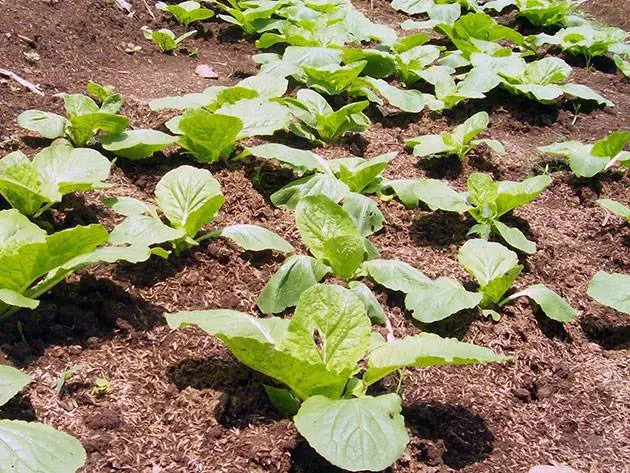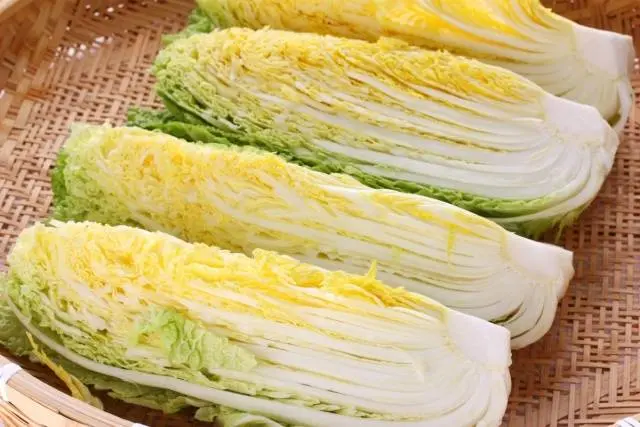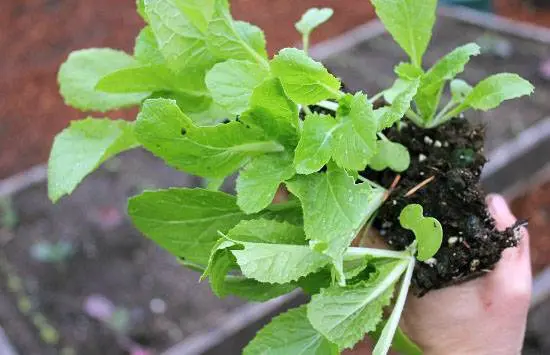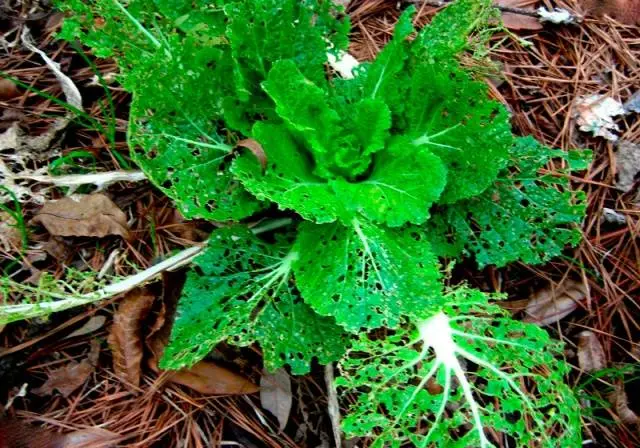Contents
Beijing cabbage is an incredibly tasty and healthy vegetable. Not many gardeners dare to grow it in their garden, as they believe that it is too picky. Those who grew this crop are well aware that with proper planting and care, no problems will arise. Some people like to eat young leaves of Beijing cabbage, while others still wait until the whole head of cabbage is ripe. When can cabbage be considered ripe, and how to grow it correctly in order to get a good harvest on time? Also in this article, we will learn how to grow as many as 2 crops of Chinese cabbage per season.

When to plant Chinese cabbage
In order to harvest Beijing cabbage in time, it is also necessary to plant it in time. It depends on the timing of planting whether the plant will bloom, and as you know, in the case of cabbage, flowering can only do harm. It is customary to sow cabbage, starting from April 15, and ending before the 20th. In warmer regions, you can start even at the end of March. At the same time, it is important that the frosts completely recede.
Cabbage ripens quite quickly. With proper care, the crop can be harvested in 1,5 months. This plant is not afraid of the cold. Seeds germinate even at +4°C. But still, for active growth, it is necessary that the temperature regime be at least + 15 ° C. This is especially important to consider when growing cabbage in greenhouse conditions. It depends on the temperature how generous you harvest.

How to grow 2 crops per season
The quality and quantity of the crop directly depends on the timing of planting. In general, Beijing cabbage ripens quickly. However, it should be borne in mind that everything depends on the particular variety. Early-ripening varieties ripen in 40 days, mid-ripening – in 2 months, and late cabbage will have to wait at least 80 days.
Overripe fruit is not the only reason for the start of flowering. Much depends on the timing of the landing. If you do not have time to sow the seeds before April 20, then most likely the cabbage will start flower stalks. If spring is late or you just didn’t have time to plant cabbage in time, you can buy special hybrid varieties that are not prone to flowering.
Immediately after the first harvest, you can re-sow the seeds. This must be done no later than mid-August. After this period, the daylight hours are greatly reduced and the cabbage simply does not have time to form heads. Also, do not experiment if the spring turned out to be cold and snowy. Planting cabbage in such extreme conditions definitely makes no sense.

Harvest time depending on the variety of cabbage
Previously, only one variety of Chinese cabbage was known, bred at the VIR station. It was called – Khibiny and met on all farms that were engaged in the cultivation of cabbage. The grade has good characteristics and fast terms of maturing. Young leaves are fully ready for use already 30 days after germination. The complete formation of a head of cabbage occurs within 40–50 days, and for a looser fruit, it will take about 2 months.
For a long time, Khibiny cabbage satisfied all the requirements of gardeners. And now the variety is very popular. Then they began to breed a large number of other, no less productive varieties and hybrids of this vegetable. We list only the most popular, and also compare the ripening magpies of each of the varieties.

Shanghai
It has medium early maturation. Full maturity occurs 55 days after the appearance of the first shoots. The head of cabbage is light green, wide and elongated. The mass of each cabbage can reach up to 1,5 kilograms.
size F1 XXL
This is probably the variety with the largest heads of cabbage. Each can weigh up to 4 kg. The variety is famous for its excellent taste. The leaves are incredibly juicy and crispy. size refers to late varieties, since heads of cabbage ripen no earlier than after 3 months. It has resistance to the appearance of peduncles. Easily tolerates low temperatures.
Lubasha
The variety belongs to mid-season, as it ripens 70 days after the appearance of the first shoots. It has yellow leaves inside and light green outside. Boasts exquisite taste. Contains a large number of useful microelements and vitamins.
Wineglass
Full maturation of heads occurs 60–70 days after the appearance of young shoots. It tastes great, crispy and juicy. Not suitable for long term storage. It is recommended to eat fresh.

What does cabbage need for rapid growth
Beijing cabbage normally tolerates a cold climate, however, it has a low frost resistance. It is contraindicated to grow in a hot climate with a long daylight hours. Under such conditions, the plant does not have time to form a head, but begins to form arrows and bloom.
In order for the fruit to grow and develop well, the air temperature should be about + 20 ° C. It is also very important to water the plants in a timely manner and carry out regular top dressing. In addition, Beijing cabbage is often attacked by some pests. Given this, it is necessary to carry out preventive measures from time to time.
To grow 2 or 3 crops of cabbage per season, you need to create the appropriate conditions. Some gardeners manage to grow a vegetable all year round in heated greenhouses. In order for the plant to develop well, it is enough to maintain the temperature regime in the range from 15 to 21 ° C.
Shooting is the most common problem gardeners face when growing Beijing cabbage. To prevent this, you must:
- buy hybrids with resistance to flowering;
- do not sow the seeds too thickly;
- plant and grow cabbage at a time when daylight hours are short. If necessary, you can cover the sprouts in the evening.
Proper care
Caring for Chinese cabbage consists of the following 3 steps:
- Loosening the soil.
- Regular watering.
- Feeding.
- Thinning sprouts.
- Preventive measures against pests.
And now everything is in order. In order to harvest cabbage in time, it is necessary to loosen the soil around the plants from time to time. This will ensure the access of oxygen to the root system of plants. This, in turn, will improve metabolic processes and water flow during irrigation.
Somehow in a special way you do not need to water the cabbage. The main thing is that the soil is not too wet and dry. It needs to be constantly kept moist. Too wet soil is a breeding ground for pathogens. In such conditions, heads of cabbage will simply begin to rot.

Usually heads of cabbage are watered 1 time in 7 days. If you water more often, water stagnation may form. The first top dressing is done immediately after the emergence of shoots. If the cabbage is planted by the seedling method, then 2 weeks are counted from the moment of planting, and only then are they fed. For this, both mineral and organic fertilizers can be used. For example, many use a solution of chicken manure or mullein. Mullein is bred in a ratio of 1/10, and chicken manure is calculated in the amount of 1 kilogram per 20 liters of water. Some gardeners prepare the soil in advance for planting. Many carry out soil treatment with solutions of superphosphate or urea.
You need to thin out the sprouts in both growing options. Both seedlings and plants sown in open ground break through 2 times. The first time the extra sprouts are pulled out at the stage of 2 leaves. At the same time, about 6-7 cm are left between individual sprouts. The next thinning is carried out 10 days after the first. Heads planted in the open ground should be about 20-35 cm apart. This arrangement will ensure unobstructed sunlight, and also allow the soil to dry out and not retain water.

It is necessary to ensure that fleas and cabbage flies do not eat heads of cabbage before you. To treat plants from pests, you can use ordinary wood ash. It is simply sprinkled on the bed until the first sprouts appear. Also, some gardeners, as a preventive measure, from time to time rake the old soil from the stems and sprinkle this place with new soil (for example, from row-spacing). Thus, not only the soil is renewed, but also the eggs laid by the cabbage fly are removed.
If fleas or other pests still appear in the garden, then these measures will no longer help. You will have to use special preparations, such as Fitoverm or Bitoxibacillin. Just remember that you can apply them no later than a month before harvesting.

When to Harvest Chinese Cabbage
It is customary to cut heads of cabbage in 2 cases:
- When young leaves grow up to 10 cm in height.
- When the head is fully formed. This usually happens 2 months or more after germination.
The weight of heads of cabbage at the time of harvest should reach about 1,2 kg. Maybe more, it all depends on the variety you choose. You need to store heads of cabbage in a cool place. Usually, Beijing cabbage retains its properties for 3 months from the time it is cut. So it is unlikely that it will be possible to keep heads of cabbage fresh until winter.
Conclusion
Of course, the most enjoyable part of growing any crop is harvesting. But in order to collect it on time, you need to work hard. As you can see, it is very important to sow seeds in time and create suitable conditions for growing. By adhering to all the rules described above, you can get an excellent harvest of Beijing cabbage.









